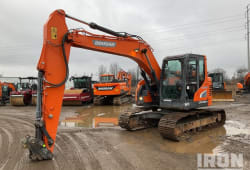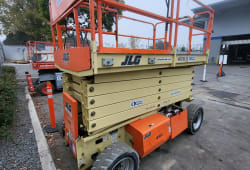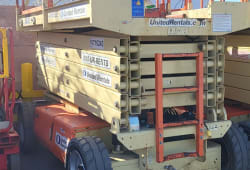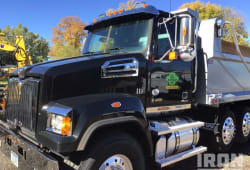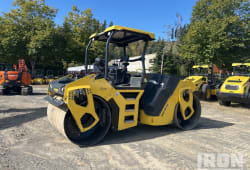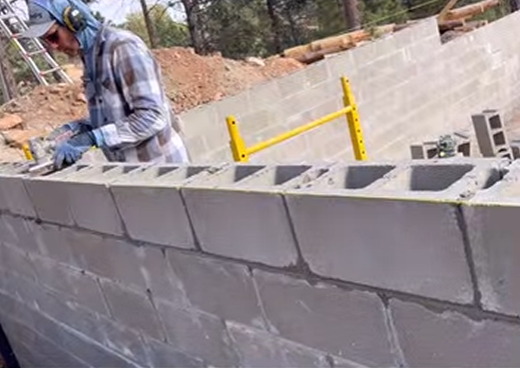Tricks How to Find the Best Used Telehandlers For Sale
7 Min read
)
March 8, 2022
Telehandlers for sale are essential at just about any job site, so it is wise to consider adding one of the best used telehandlers for sale to your fleet. Used telehandlers for sale are a great way to add to your capabilities, without breaking the bank on a new piece of equipment. Anytime you purchase or sell a piece of used machinery, type telehandlers for sale, it is important to know what to look for best used telehandlers for sale to ensure that you are buying a safe and reliable machine. Here are some tips for how to browse and find the best used telehandlers for sale.
Tips to Find the Best Used Telehandler for Sale
Mechanical Systems
The mechanical systems of for sale telehandlers include the engine, drivetrain, and hydraulics. To test these systems, start up the machine to see how it cranks to determine the condition of the mechanical components. If you happen to have to grind on the starter, the interior elements may be damaged or worn. You will also want to check the mechanical systems for signs of leaks, assess the condition of the fluids, and test out the gears. Test out the steering, as well as the service and parking brakes to ensure that they are not worn, damaged, or altered.
Structural Systems
Once you have verified that the mechanical components of the whole telehandler maintenance part are sound, you are ready to inspect the structural systems of the machine for signs of damage. Beginning with the boom, inspect the entire element starting at the hinge point that anchors the boom to the frame. Check the entire boom system for evidence of damage, cracks, or potential repairs. This includes signs of fresh welds or paint that may have been used to cover up a recent repair. Since the boom is the element that bears the brunt of heavy loads on the telehandler maintenance load under heavy loads and weight of heavy loads, it is important to double-check the structural integrity of the lift system for any evidence of previous failures and repairs. If a piece of the structure has failed, this could indicate that the overall integrity of the telehandler maintenance machine has been compromised for a few reasons and may affect its safety or functionality. After the integrity of the lift boom has been confirmed, inspect the frame for any signs of damage, cracks, welds, plates, or repairs. Check the areas where cylinders, forks and axles connect to confirm that the axles oscillate, and check all of the hinge points where external components are attached to the frame.
Visual Appearance
Taking a look at the visual appearance of a machine will be a great indicator of how the machine-like telehandler was used and what kind of shape it is in. Walk around the exterior of the telehandler and make sure that there are no obvious dents or cracks on the outside of the machine. Then go into the enclosed cab and lookout for signs of wear or neglect such as broken glass, a dirty interior, loose wires, or previous repairs. The overall condition of the machine's appearance will be a great indicator of how it was cared for and maintained by the previous owner. Take some time to inspect the telehandler's tires, as they are quick to deteriorate and can cause significant downtime. Check the treads to see how soon the tires will need to be replaced, and find out if the tires on the telehandler are filled with air or foam to help you budget the price for replacements. This is an important but often overlooked element when it comes to the price of buying a used telehandler.
Maintenance History
A used telehandler is only as good as the care and maintenance it received. When speaking with the seller, ask to see the manufacturer's work order and maintenance records for the machine to review before making a decision. These records will tell you about how the machine was cared for and any kind of repairs or maintenance it received over time with the previous owner. If the records show that the telehandler received a structural repair for heavy loads, be sure to ask for the manufacturers appropriate documentation to evaluate what was done to ensure that the telehandler maintenance and repairs meet the manufacturers specifications.
Check for Official Documentation
In addition to official documentation, you will still want to do your due diligence to thoroughly inspect the telehandler sale yourself, or with the help of a certified inspector, to identify any potential issues with the machine. Keep a close eye out for any signs of an oil leak, and ask for the warranty, cost of repairs/replacements, and the reliability of the machine before buying.
Buy the Best Used Telehandler for Sale
While buying a used telehandler, it is crucial to go into the transaction as an informed buyer who knows what to look for to determine the quality of a piece of equipment. Following these steps will help save you the time, money, and frustration that immediately regain access along with purchasing a faulty piece of used equipment.
How to find used Telehandlers online?
When scouring the web for the best used telehandlers for sale, several strategies can streamline your search process. Utilizing online search platforms and specific sites dedicated to equipment sales is paramount. Start your best used telehandlers for sale search by accessing reputable sites that manage listings for construction machinery, like used telehandlers for sale. Narrow your search by entering your location, whether in Texas or any preferred region, to find machines within a designated range of miles or kilometers.
Once on the site or page, utilize search filters or specific keywords, such as "used telehandlers," "construction equipment," or brand names like "JCB" or "Caterpillar." These search tools can help refine results to display the sell of relevant brands for sale or sell of items to sell based on your preferences.
When browsing a page through listings, examine each page thoroughly, looking for comprehensive details about the telehandler's condition, specifications, and pricing. Some pages may include images, descriptions page, seller information page, price, and perhaps even video demonstrations.
It's essential to manage your search by comparing multiple options, considering factors like age, usage, maintenance history, price and seller credibility. Additionally, don't hesitate to reach out to manufacturers and sellers for further information or to schedule viewings. Finally, always manage your expectations and perform due diligence by vetting the price and the telehandler's history and inspecting it in person if possible before making a purchase.
Wrapping Up
Acquiring or financing to sell a used telehandler in Texas demands a vigilant and comprehensive approach, focusing on various crucial aspects to ensure the sale is a just sell, safe sale, reliable sale, power user and cost-effective investment. By examining a brand's mechanical and structural systems, conducting and completing a visual inspection, scrutinizing maintenance records, and seeking official documentation, buyers can make informed decisions, safeguarding themselves from potential pitfalls associated with financing to sell or purchasing faulty equipment.


